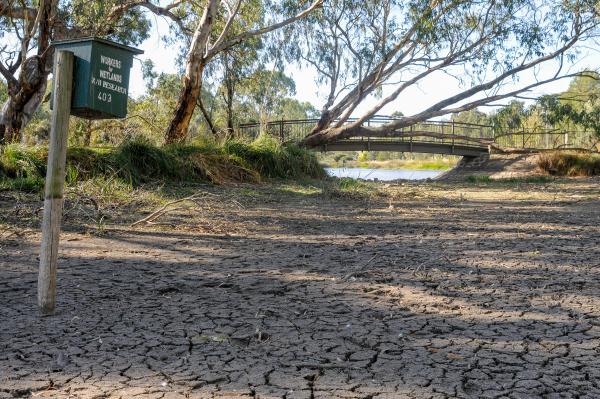
By NOEL MURPHY
NEWTOWN’S Balyang Sanctuary, half its lake reduced to dried and cracked mud, looks like the worst of the drought has returned to savage its wildlife.
Pelicans, coots and ducks scramble to splash in what’s left of the lake’s northern reaches even as green grass, thick brush and foliage and healthy-looking eucalypts flourish around its edges.
But gone is the southern pond where families could sit and watch the ducks and water hens splash about in the water.
But for all its apparent problems the sanctuary is as it should be, according to City Hall.
The summer has been dry, the fauna and flora at the reserve are indigenous and recent revamping works were designed to avoid stagnant water problems such as blue-green alga migrating from the Barwon River into the lake.
Council environment and natural resources manager Rodney Thomas said Balyang Sanctuary was an “ephemeral wetland system” with seasonal drying of the ponds a natural part of its ecology.
“Some of the birds and animals that use Balyang Sanctuary will move to the Barwon River when the wetland is dry, others will stay and only move away to feed,” Mr Thomas said.
“This is similar to what occurs in other ephemeral wetlands throughout greater Geelong.
“The plants that were planted in the redevelopment of the wetland are indigenous to the area and were chosen for their ability to survive in an ephemeral wetland system.
“It’s worth noting that since the redevelopment of the Balyang Sanctuary wetland there has been no recurrence of the blue-green algae blooms that occurred in low-flow conditions prior to the works.
“While the plants may die back or look like they are dying, the whole system is designed to be reinvigorated after rain.”






